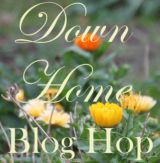This past weekend it was finally time to plant the garlic in the garden. We use garlic in just about every dish we make and also use it to make pest deterrent sprays for the garden, so it is an important crop for us to plant. Garlic is fairly easy to grow if you follow some simple steps, the first being to start will healthy stock. I bought garlic from Seed Savers Exchange a couple years ago and have been saving the largest cloves for re-planting each fall. I started with several different varieties to see what grew the best in my area and to determine which flavor I liked the best. I grew:
Erik's German White - red-purple skinned cloves, east to peel. Rich and slightly spicy garlic flavor. Hardneck, 4-6 large cloves.
Chet's Italian Red - Heirloom variety from Chet Stevenson of Tonasket, Washington. A good garlic for raw eating because the flavor is not too strong. Softneck, 12-16 cloves per bulb.
Chesnok Red - Beautiful purple striped paper with red cloves, easy to peel. Good lingering taste, retains flavor well when cooked. One of the very best for baking or roasting. Hardneck, 8-10 cloves per bulb.
Georgian Crystal - Beautiful fat bulbs with large cloves, mild flavor when raw, smooth and buttery when roasted. Hardneck, 4-6 cloves per bulb.
Georgian Fire - Described as a truly "white hot" garlic. Raw taste is strong with a nice hotness that is not at all unpleasant. Great for salsa and salads. Hardneck, 4-6 cloves per bulb.
When to Plant:
Garlic should be planted between September 15 to November 30, with the optimal time being in October after the first light frost. Remember to plant the largest cloves to grow the largest bulbs. Leave the outer skin on the bulb and do not separate the cloves from the bulb until you are ready to plant.
Garlic is a heavy feeder and likes a soil with a pH of about 6.5, loose and rich with lots of organic matter to provide good drainage.
I use the biointensive method for planting, which allows you to plant 4 times the amount in one-quarter of the area. Some great resources on biointensive planting are How to Grow More Vegetables and The Sustainable Vegetable Garden by John Jeavons of Ecology Action. The biointensive method includes double digging your beds, and planting in a honeycomb pattern to make better use of your planting area. Double digging allows the plants roots to grow larger, giving them access to more food and water, providing for healthier plants and better yields.
According to the charts in these books, garlic should be spaced 4" apart.
 |
| 4" planting layout. |
Plant the cloves with the root end down, pointed end up. Cover with 2" of soil and a 6" layer of mulch. I use chopped leaves as mulch, which works the best for me.
I made 4' x 4' mesh baskets to put over the beds to keep squirrels and other critters from stealing my seeds.
The garlic cloves will begin to sprout through the mulch in 4-8 weeks, depending on the variety and weather conditions. Do not be concerned, the plants may suffer frost or a small freeze but will survive.
Garlic needs about 1" of water per week during the growing season. Stop watering about June 1st, this allows the bulbs to form better and harvest more easily. Keep weeds under control early. Garlic does not compete well with weeds.
Cut or break off the scapes after they are 10" long as they will inhibit bulb growth if allowed to grow. The scapes can be used in soups, stir fries or even pesto.
Harvest after leaf die-back begins and there are still five green leaves remaining on the plant, sometime in June or early July, depending on your climate. Do not wait too long or the bulbs will begin to separate in the ground.
I have read that some garlic farmers will plant the bulbils ( the "seeds" that form from the flowering scapes) to grow more garlic. The bulbils are supposed to be better to replant because they have not touched the soil and therefore do not carry any of the plant diseases that may have affected the garlic bulb. The only drawback to planting this way is it takes two years to get full garlic bulbs. The first year you will end up with a round, which you harvest and dry when harvesting your garlic, then replant in the fall as you would regular garlic cloves. In the 2nd year you will end up with a complete clove. I like to mimic nature as much as possible when planting and this makes perfect sense to me. In nature, the garlic will grow, send up a scape, flower and then drop it's seeds in the fall.
Each year I have saved the bulbils from the flowering scapes, but never get around to planting them. This year I planted 4 rows of bulbils along with the garlic cloves to see what kind of results I get.
 | |||||||
| Garlic planted on left - bulbils planted on right. |
And of course, I had my two helpers watching everything I did, checking the freshly turned beds for bugs and watching out the large birds flying overhead!








































Lovely and informative post!
ReplyDeleteThank you!
Delete~Rob
I planted my bulbs without the skin..should I do over?
ReplyDeleteThey should be fine. The reason to leave the skins on is to protect the cloves from getting bruised or damaged while being moved around and planted. The skins also provide a temporary barrier from infection and dehydration, but planting without the skin should be fine if they are handled carefully and planted quickly.
Delete~Rob
thank you, I have been contemplating starting over ever since I planted them. I've done garlic before, and don't know what inspired me to peel off the skin..On the other hand, if they are progressing along, I didn't want to disturb them. I will leave them, and wait for the beauty of green in spring..Thank you..
ReplyDeleteGreat post! I love Seed Savers Exchange as well. I use garlic in just about everything I cook so I really should plant my own!
ReplyDeleteThanks! I planted way too much garlic last year and ended up with over 8 pounds! This year I planted a little less! Thanks for reading!
Delete~Rob
Hi Rob! I'm so glad you came by to say hello and introduce your blog to me! I'm following you now. It looks like I have some good catching up to do here! Love what I see already!
ReplyDeletePlease come share your posts with us on my Friday hop! I know my readers will love your blog!
Thank you and thanks for stopping by! I'll be sure to check out your blog hop!
Delete~Rob
Those ducks are fabulous! I've never grown garlic, although I should since I cook with a lot of it. Thanks for your easy instructions! I would need to grow mine in pots since I have clay soil. I did throw out seeds for garlic chives, does that count? :o)
ReplyDeleteI've never grown garlic in pots, but I hear it is pretty easy to do. I'll have to try growing carrots in pots, thanks for the tip and thanks for stopping by!
Delete~Rob
Mmm, I love garlic!
ReplyDeleteHi! Your post was featured in this week's Eat Make Grow link party. Congrats, and thanks for linking up! http://www.hideousdreadfulstinky.com/2012/11/eat-make-grow-14.html
ReplyDeleteThank you so much for featuring my post!!
Delete~Rob
Rob, thanks for teaching me about bulbils. I usually just knock them off back into the bed and 'let the seeds fall where they may' so to speak, but I'd always wondered what they were.
ReplyDeleteI was not thinking when I harvested this summer and roasted almost all of my garlic, so I was very glad to get garlic from my farm share that I could plant a good amount. I got my garlic and shallots in a couple of weeks ago.
(here from Gastronomical Sovereignty's Wednesday Fresh Foods link)
Thanks!
I planted way too much garlic (if there is such a thing) last year so I had plenty left over to plant this fall. It will be interesting to see if the bulbils actually grow! Thanks for stopping by!
Delete~Rob
Great how-to! Thanks for sharing. I have been thinking of plating garlic, and now I have no excuse!
ReplyDeleteThanks so much!
Delete~Rob
i have always wanted to plant garlic because
ReplyDeleteA. like you, we use it in everything.
and B. it is SO much better - nay, it's an entirely different product than what you get at the grocery store.
my question is this though: how much do you need to plant to make it worthwhile? we go through one to two bulbs a week - how much would we need to plant to last us all year long? i'm not sure i have the space for that. haha.
thank you for sharing with the Wednesday Fresh Foods Link Up! I looks forward to seeing you again this week with more wonderful seasonal & fresh/real food posts. xo, kristy.
Kristy, the great thing about planting garlic is that is doesn't really take up too much space. I plant using the biointensive method (I listed links in my post) so in a 4' x 4' bed you can get anywhere from 68 to 138 cloves of garlic, depending on the spacing. Last year I planted two 4' x 4' beds and ended up harvesting over 100 bulbs, and that's after the squirrels got in and took a bunch! I have also read where some people plant their garlic in pots and have great success. Peaceful Valley Farms (www.groworganic.com) sells "smart pots" that you can use to grow in if you don't have space in your garden. I have used them for potatoes and they work really well. Hope this helps!
Delete~Rob